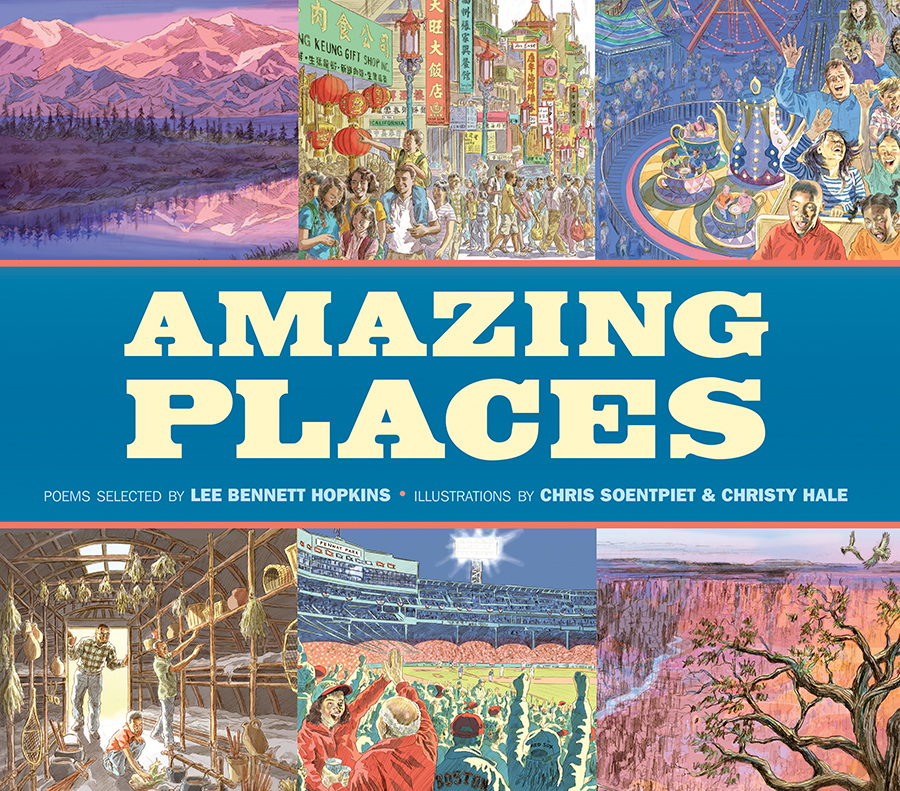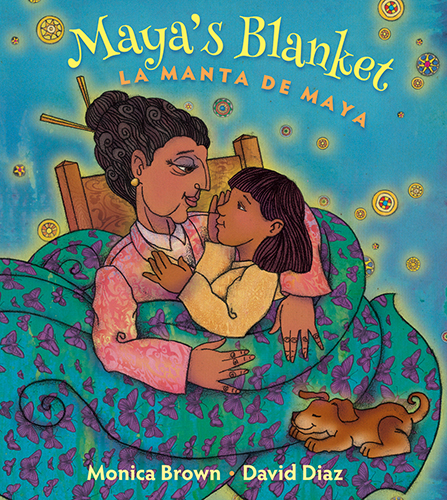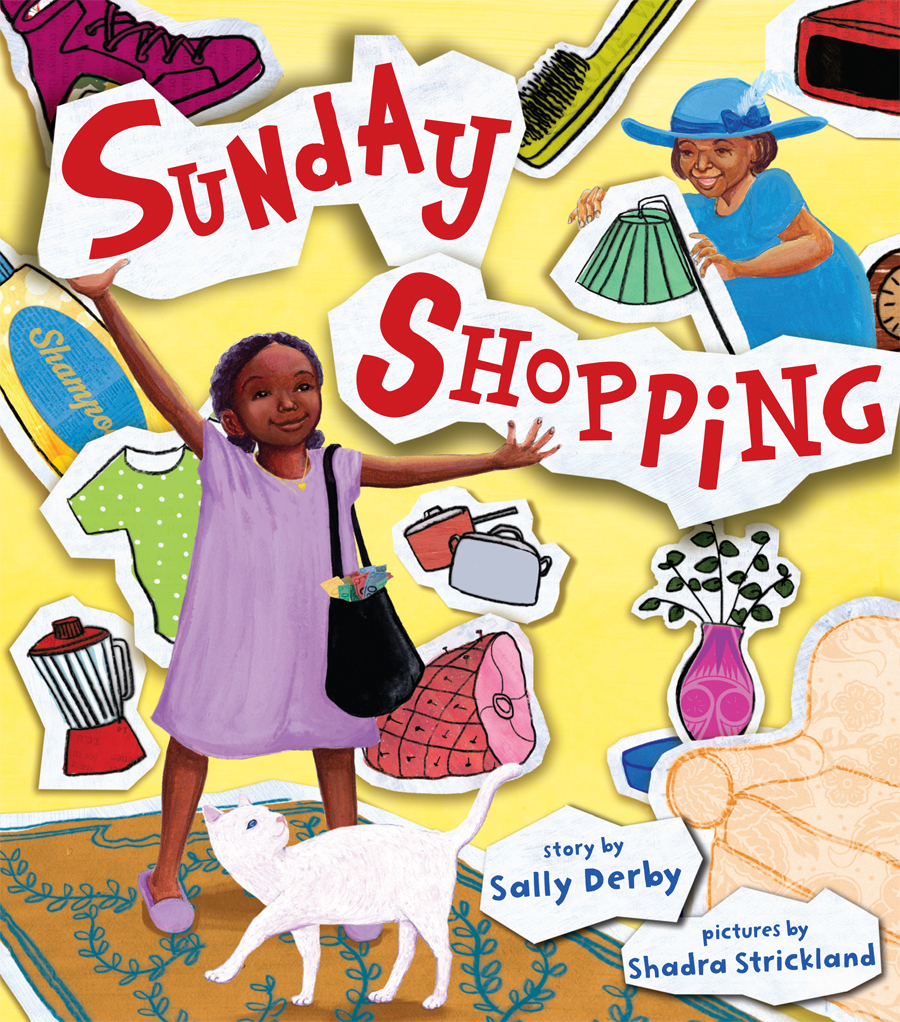Today we are pleased to share this guest post from Librarian and Diversity Coordinator Laura Reiko Simeon. Welcome, Laura!
On a shuttle bus at the ALA Midwinter Conference, I overheard a conversation between two librarians who had also attended the event where Journey around Our National Parks from A to Z by Martha Day Zschock (Commonwealth Editions, 2016) was showcased as an example of inclusivity, portraying as it does ethnically diverse individuals enjoying the great outdoors. I was disturbed to hear these white women chuckling over what they saw as the ridiculousness of this book’s presentation in a session about diversity. They made it clear through snorts of derision that just having pictures of children of color didn’t count as making a book diverse, and that the effort itself to show diversity in this book was just plain silly.
Later, I couldn’t stop thinking about this. Zschock’s illustrations are important topically, as the New York Times piece, “Why Are Our Parks So White?” makes clear. Showing a dream for the future of these precious spaces is no small thing. But Zschock’s choice to include only visual diversity also has broader significance as Christopher Myers wrote in “The Apartheid of Children’s Literature”:
Children of color remain outside the boundaries of imagination. The cartography we create with this literature is flawed.
A book alone may not literally bring a child of color into a National Park, but it can plant a seed that may one day bear fruit. For a child to see someone who looks like them enjoying nature amidst a sea of books that show absolutely no one like them doing any such thing – to me that is most definitely not laughable.
White characters in books are allowed to grapple with issues that have nothing to do with their racial identity. Often they simply have fun adventures without any heavy personal issues to resolve. Yet all too often diverse characters, when they appear at all, are merely a tool to teach about a particular problem – or they are the best friend, existing to validate the goodness of the white main character.
One tip for more inclusive reading is, “Think about the subject matter of your diverse books. Do all your books featuring black characters focus on slavery? Do all your books about Latino characters focus on immigration? Are all your LGBTQ books coming out stories?” Similarly, diverse books are frequently relegated to specific, short-term units, such as Black History Month. But the “observance month can easily lead to the bad habit of featuring these books and culture for one month out of the entire year. Ask yourself: Have we ever taken this approach with books that feature white protagonists?”
Children notice this. Books about people of color risk being labelled Not Fun. Continually choosing books in which people of color are victims communicates that not being white means living a life of misery and suffering. While learning about injustice is crucial, only focusing on oppression reduces the rich complexity of people of color’s lives to a source of pity.
Fortunately there are an increasing number of books out there that show diversity without making it “the problem.” Unfortunately they can be hard to find: the whitewashing of book covers often disguises diverse contents, and these books are frequently not given library subject headers that indicate their diversity since they’re not about race, but something else entirely. Given these difficulties, here are a few Lee & Low titles that deserve a shout out.

This book takes readers on a journey around America to classic landmarks including Niagara Falls, the Mississippi River, the Texas State Fair, and Denali National Park. Poems by authors such as Alma Flor Ada, Linda Sue Park, and Joseph Bruchac are gorgeously complemented by Chris Soentpiet’s and Christy Hale’s illustrations showing racially integrated communities and people of many ethnic backgrounds. Whether the backdrop is a stunning wilderness scene or a cultural attraction, this book celebrates the diverse natural and human beauty of this nation.

This is a bilingual English/Spanish retelling of a classic Yiddish folktale. This charming story of the love between a little girl and her abuelita is firmly rooted in Latino culture, while David Diaz’s lively illustrations show Maya playing with a multiracial group of friends. Scenes of cross-racial friendship such as these have a positive impact on children’s behavior, yet are so rare that in one study the researchers had to create their own materials!

A grandmother and granddaughter let their imaginations run wild as they use the Sunday paper to inspire flights of fancy. Evie’s mother has been deployed, and her loving presence is a constant backdrop to the daydreams they indulge in as they browse the colorful ads. Shadra Strickland’s vibrant collages bring to life this universal story of strong family bonds. Evie and her Grandma are black. Why? Well, why not? Children from all racial backgrounds can connect to this warm and playful story, and making the characters black when they don’t “need” to be allows their humanity to shine through first and foremost.
Other Guest Posts by Laura Reiko Simeon:
Tearing Down Walls: The Integrated World of Swedish Picture Books









